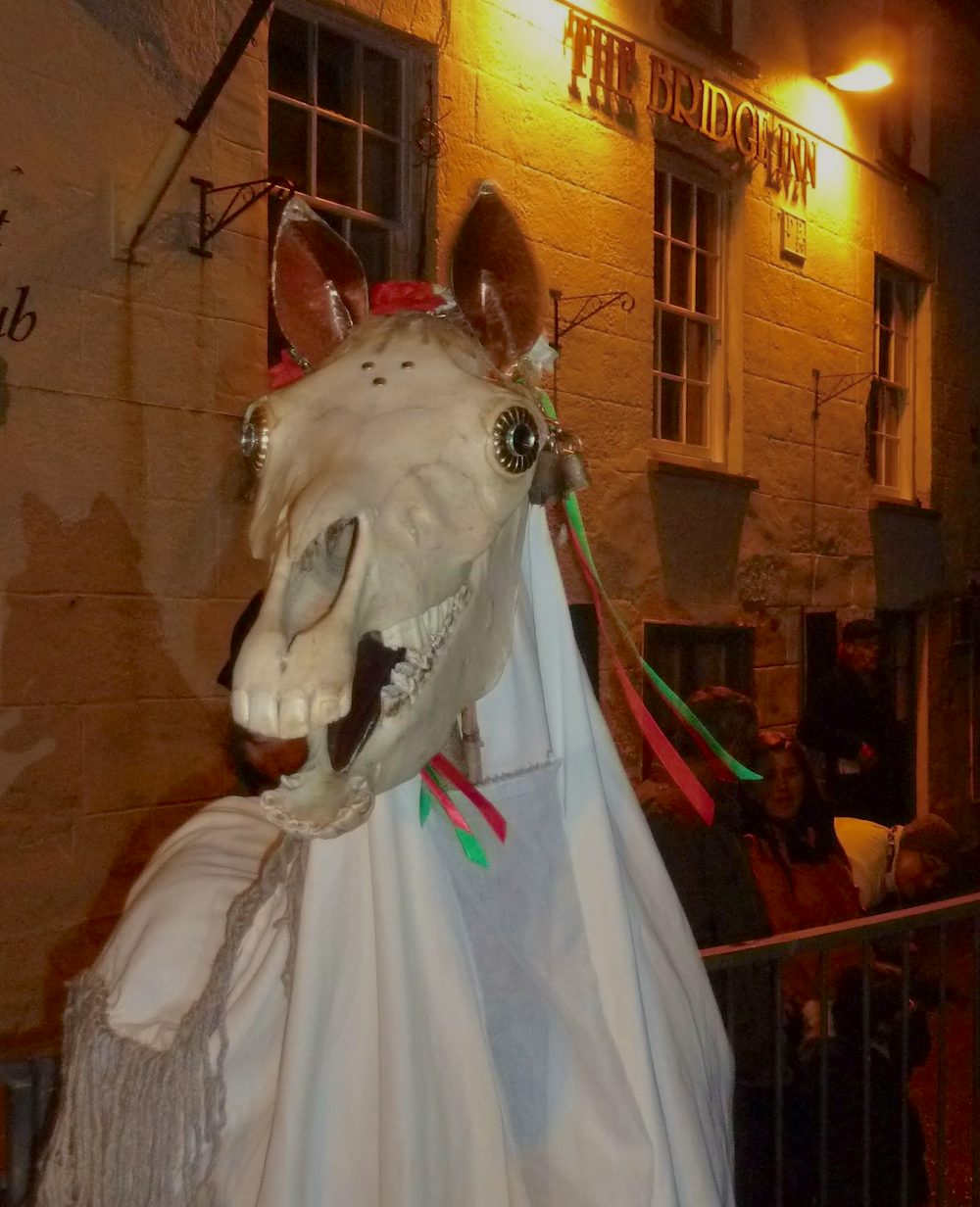In the United States, children who look forward to Christmas presents under the tree in December have to be good all year long, or else they’ll get coal in their stockings. I’m here to tell you, Santa Claus lets American kids off easy. Elsewhere, ghouls and goblins lurk at every turn, and the consequences of not being on your best behavior are severe. Here are a handful of the terrible creatures to make you thankful Santa’s such a softy.
Krampus and Other Bad Santas
Krampus is the most famous of Christmas monsters, thanks in part to a 2015 horror film of the same name. Part goat and part demon, Krampus has been around for centuries. On the night of December 5 in many Alpine countries, Krampus tags along with Saint Nicholas, the European proto-Santa.
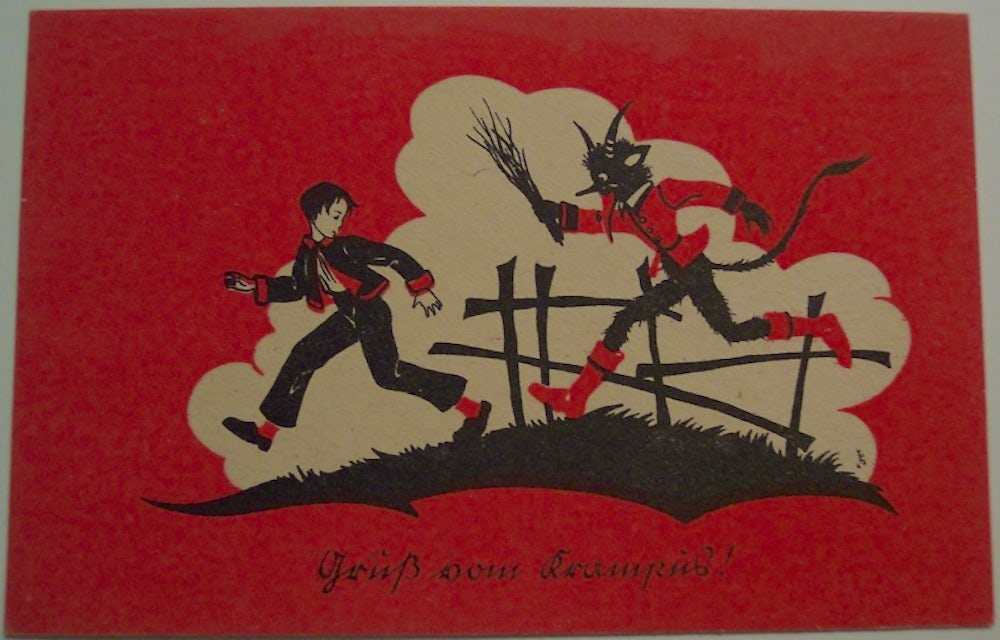
While St. Nick goes around leaving candy for the good children and birch sticks for those who have misbehaved, the sole focus of Krampus is punishing the naughty. The best-case scenario for those unfortunate souls: Krampus will use birch branches for swatting. The worst-case scenario is that Krampus stuffs the children into his bag. He then drags them to the underworld where they may or may not be eaten.

Belsnickel (Germany), Hans Trapp (France) and Père Fouettard (France again) all play a similarly sinister role in their respective areas. Although none of them look as monstrous as Krampus, all of them are pretty nasty characters who scare children into good behavior.
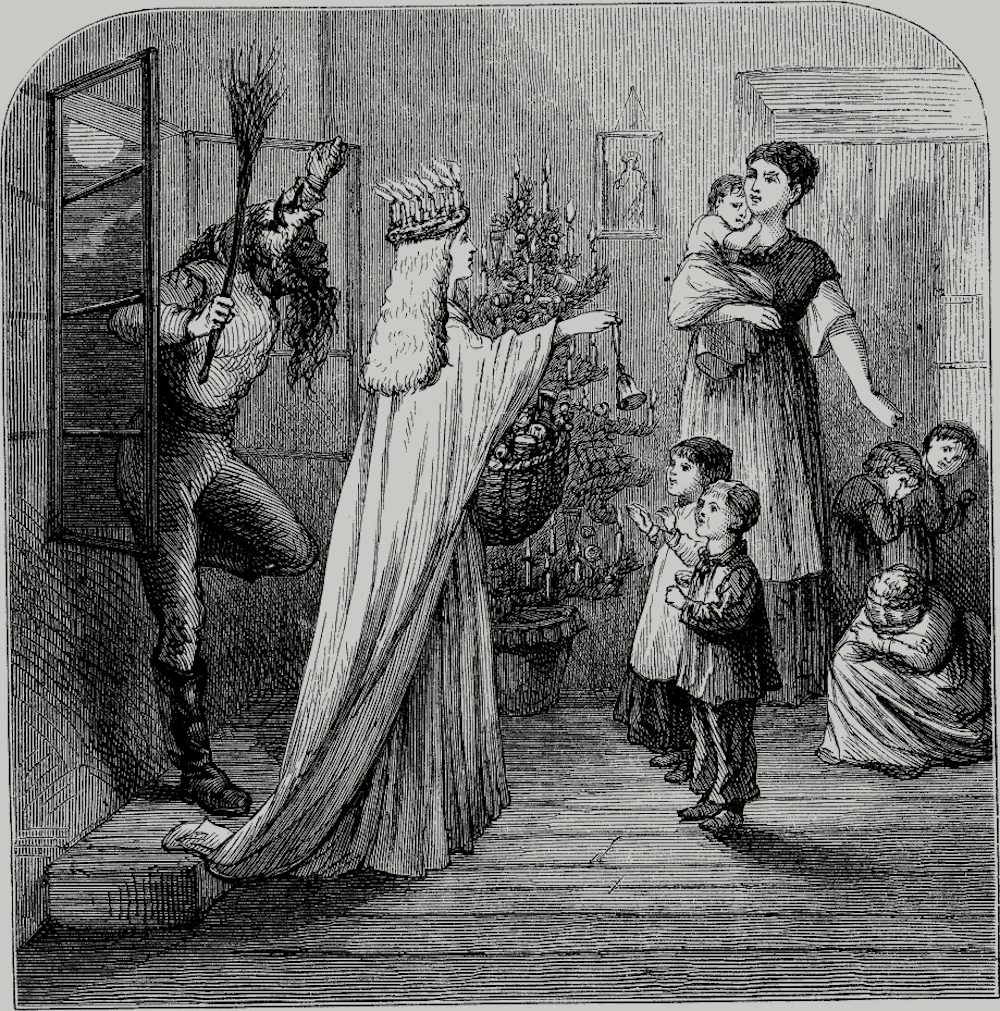
Gryla, the Yule Lads and the Yule Cat
The long, dark winters of Iceland have given people there ample time to concoct some truly memorable holiday fiends. In fact, the giant troll Gryla, with cloven feet and 15 tails, is a personification of cruel Icelandic winters. Around Christmas time, Gryla leaves her mountain home to pick out all the bad children, put them in a sack and take them back to her cave to boil for stew.
.jpg?or=0&q=60&crop=faces,entropy&auto=format&fm=jpeg&shad=50&vib=20&duotone-alpha=40&duotone=000000,2CFFD4C6&w=1000)
She and her husband, Leppalúði, have a cat, Jólakötturinn, or the Yule Cat. The Yule Cat is taller than a house, and on Christmas, the beast checks to make sure each and every Icelandic child has received new clothes. If they haven’t, the Yule Cat devours them.
Gryla and Leppalúði had 13 children (or possibly more, depending on who you talk to). They’re known as the Yule Lads, and they are generally up to no good, although most of the time, their brand of trouble is more benign than their mother’s. Most of them are named after their petty crime of choice — Bowl Licker, Door Slammer, Sausage Stealer, etc. In present day Iceland, the tricksters seem to have grown kinder. The Yule Lads are known to leave presents for well-behaved children in their shoes.
Karakoncolos, the Christmas Bigfoot
The Karakoncolos seems to be sort of a demon version of a Sasquatch. In Turkey, the monstrous fellow hangs out on street corners during the winter, waiting for someone to walk by. At that point, he’ll ask them a question, and if the answer doesn’t include the word “black,” the Karakoncolos will strike the person dead.
In Serbia, ghosts and demons run loose during the 12 Days of Christmas, and the Karakoncolos joins in on the chaos. He will loiter outside at night, waiting for an unsuspecting victim to wander by, at which point he will jump on their back and demand a piggyback ride until dawn, when he returns to the shadows. The Karakoncolos might also lure people from the warmth of their homes by mimicking the voices of friends and family.
Christmas Witches: Frau Perchta and La Befana
In Austria and surrounding areas, Perchta shows up during the nights of the 12 Days of Christmas. Perchta’s deal used to be enforcing community rules and traditions. These days, she generally rewards kind, hardworking folks and punishes the lazy and greedy. For those in the latter category, she cuts open their stomachs, removes their internal organs and replaces them with straw, pebbles and trash.
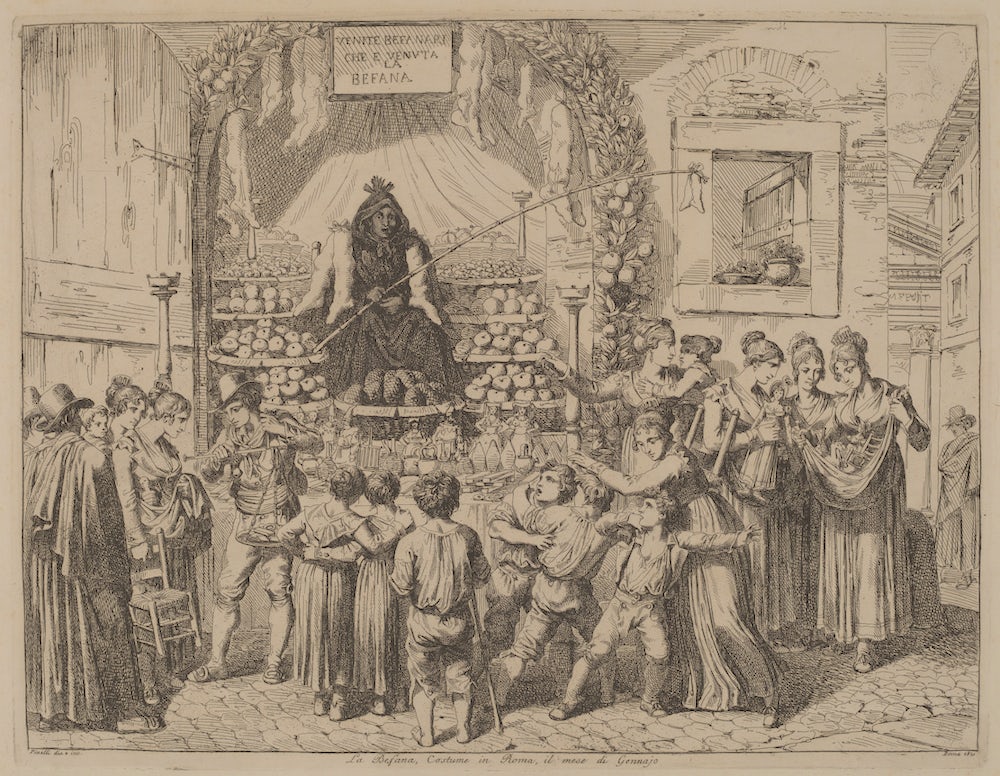
La Befana is a little bit more chill. In early January, Italians celebrate the Feast of the Epiphany to end the Christmas season. The festival commemorates the arrival of the Magi to Bethlehem. On the eve of Epiphany, La Befana, a broom-riding old woman in a black shawl delivers gifts to the good children and lumps of coal to the bad. Luckily for Italian little ones, the coal usually turns out to be candy made with sugar, eggs and food coloring.
Mari Lwyd, the Christmas Zombie Horse
During the holidays in Wales, the dead horse Mari Lwyd rises from the grave, then goes door-to-door challenging those who dare to a rhyming battle of wits. In practice, here’s what that looks like: groups of revelers take a decorated horse skull around, knocking on doors. When the door opens, the group will sing Mari Lwyd’s challenge then start a “pwnco,” or call-and-response rhyme battle with those inside the home, each group trying to outdo the other.
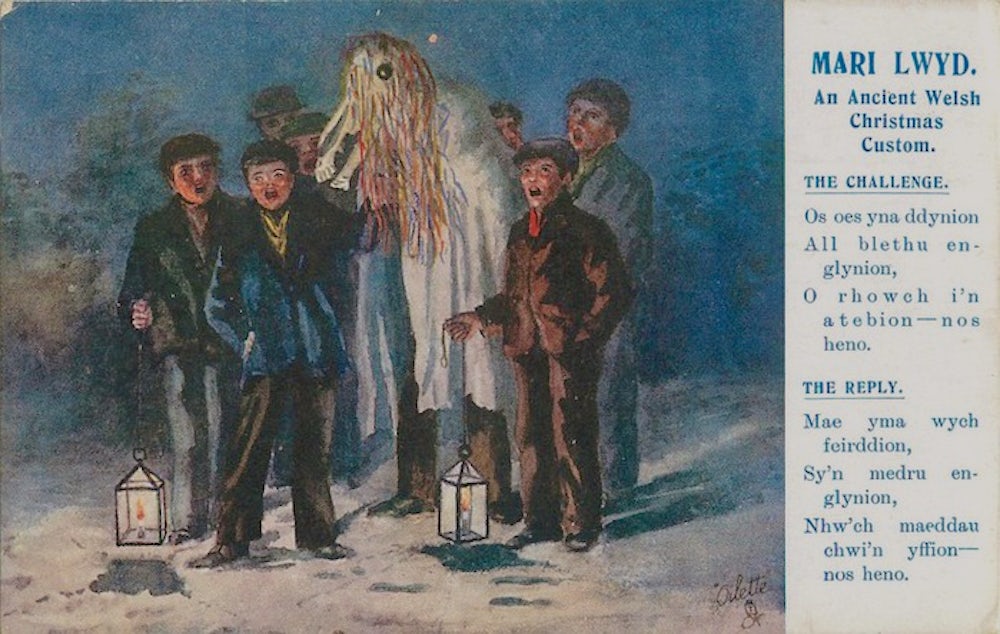
Just in case you find yourself confronted by a poetic zombie horse this Christmas, arm yourself with some poems that might appease the spirit.
